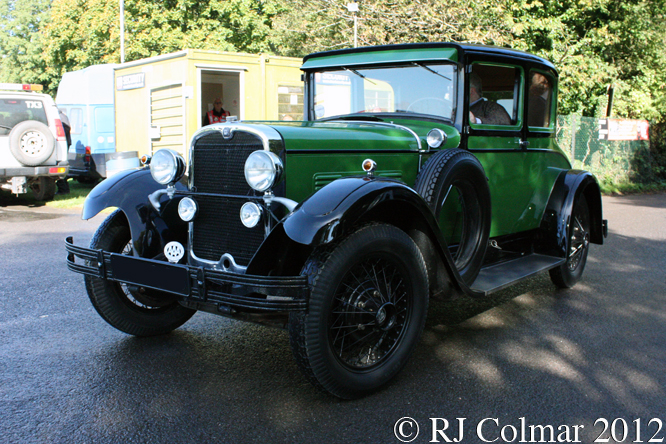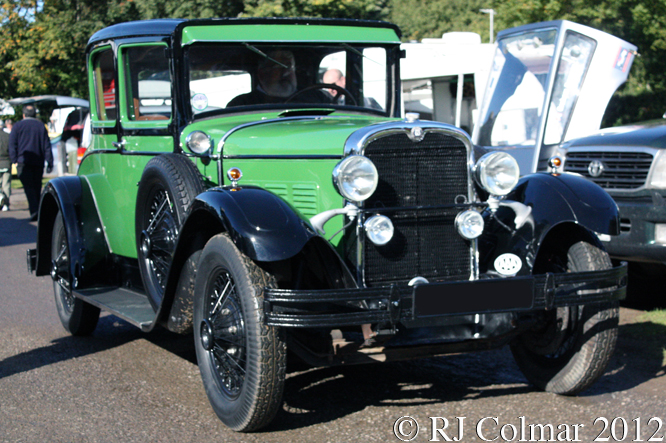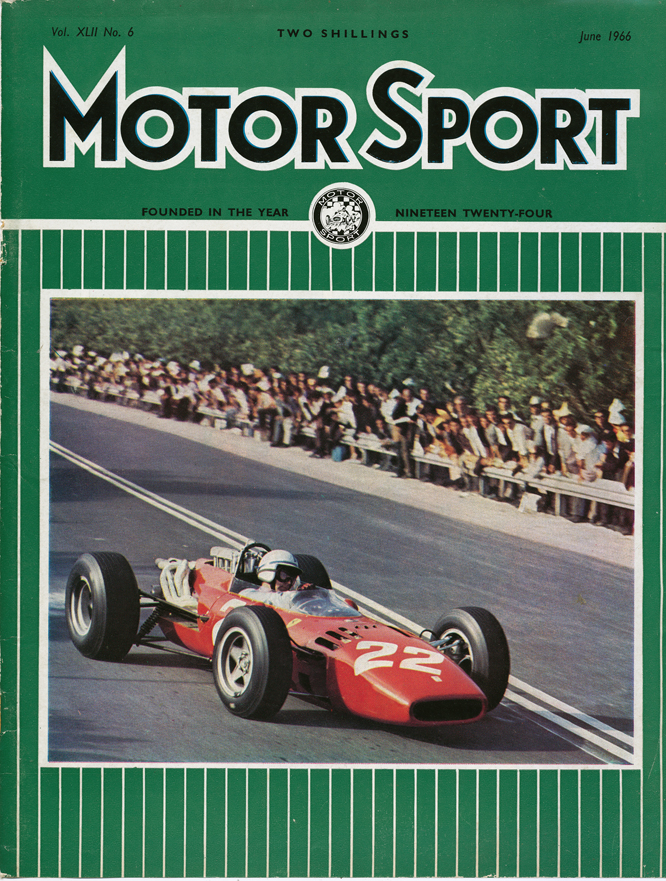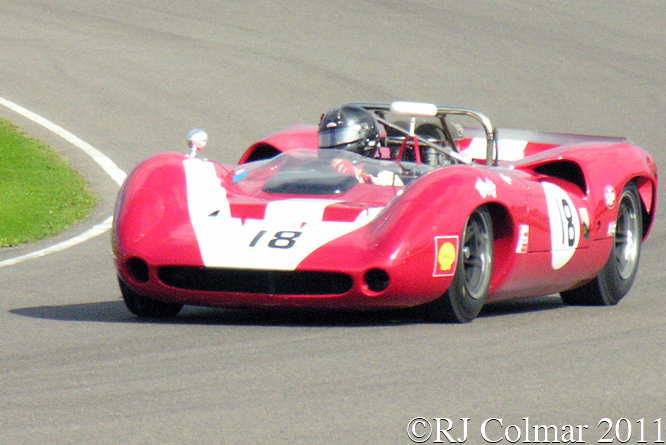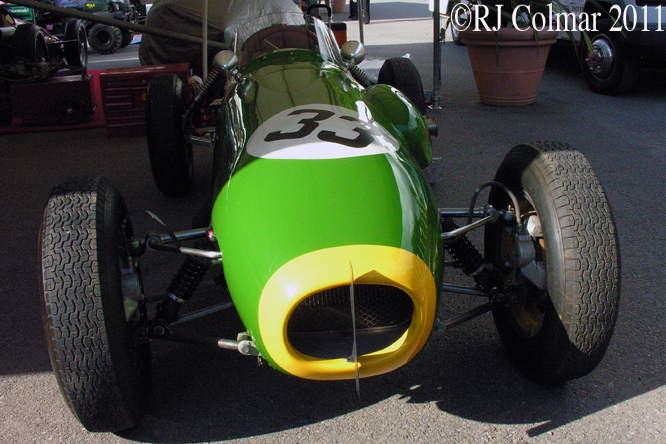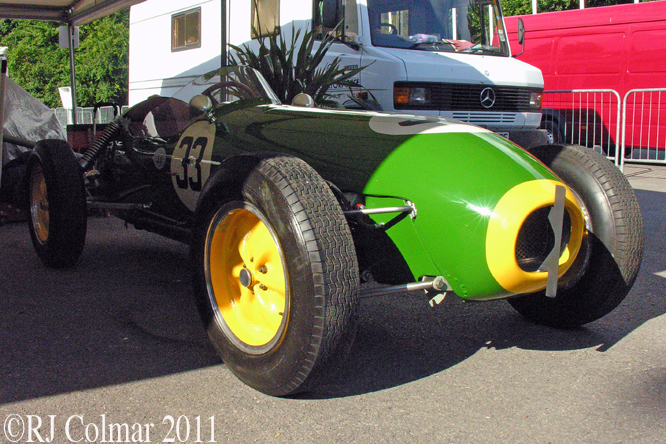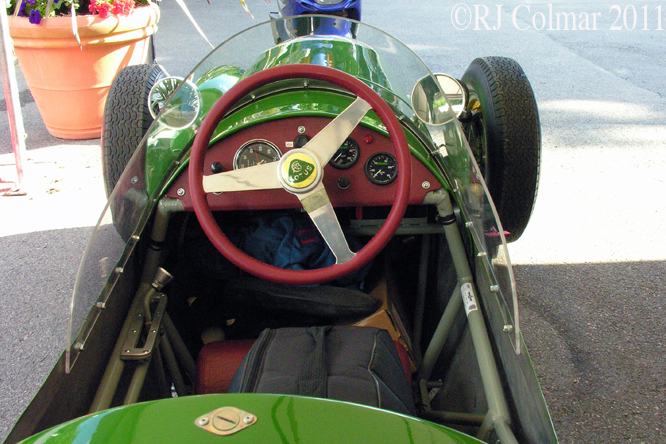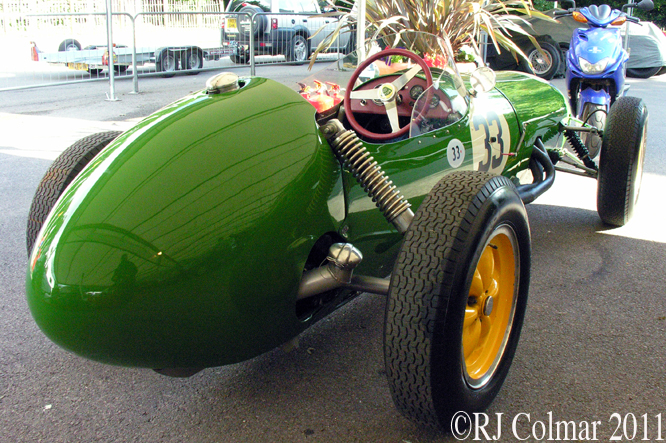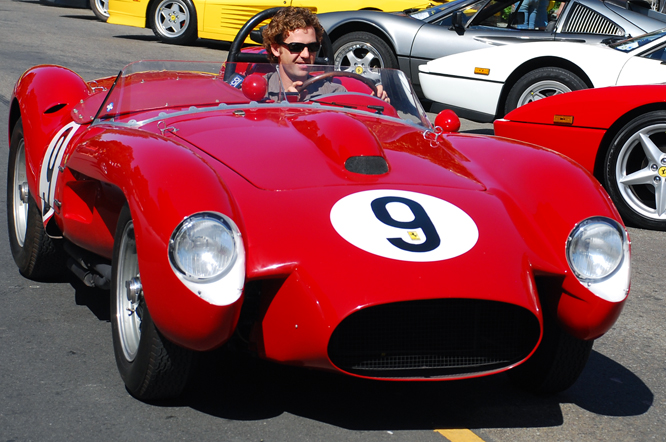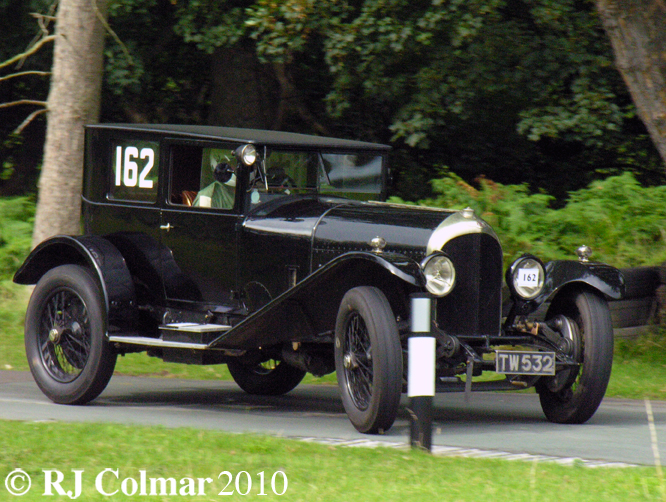For 1972 Adrian Chambers Castrol SCA Freight team built a second generation Chevrolet Camaro with Mark Lesueur and Norman Lockwood to replace the ex-Bobby Brown first generation Camaro Z/28 it had been campaigning with Australian Frank Gardner at the wheel.
The car was initially fitted with a 5,736 cc / 350 cui motor and raced in the British Saloon Car Championship while the team saved the first generation Z/28 for selected appearances in the Deutsche Rennsport Meisterschaft.
During 1972 Frank won outright and by definition his class at Thruxton, Silverstone, Oulton Park, Mallory Park and no less than 3 times at Oulton Park to secure a class win in the championship but still had to give way in the overall championship to Bill McGovern driving a George Bevan Hillman Imp to a perfect 11 out of 11 class victories.
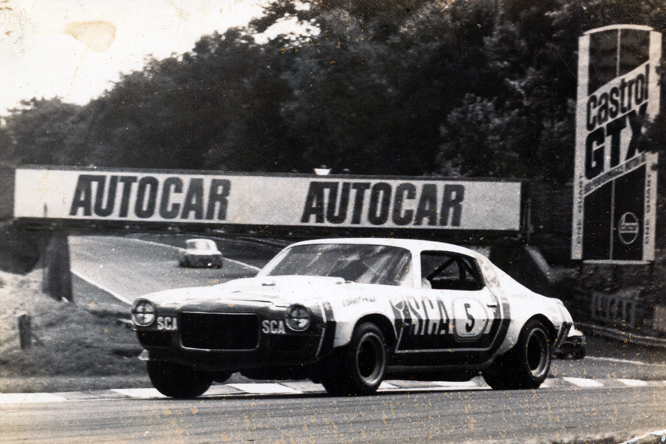
Frank is seen driving the car above to victory at the 1972 British Grand Prix meeting at Brands Hatch in this photograph given to me by someone at school in the mid 1970’s.
The following season Frank drove today’s featured car, now fitted with a 7 litre / 427 V8 to six victories from 9 starts to secure his third British Saloon Car Championship and can be seen driving the car round Oulton Park that year in the clip below.
For 1974 the British Saloon car championship mandated a change to less radically modified Group 1 specification cars and Frank drove the SCA Group 2 spec Camaro with Australian compatriot Brian Muir in Europe where the car always qualified in the top six but frequently failed to start and when it did always failed to finish.
Frank retired to Australia at the end of 1974 where he continued racing into the the early 1980’s and running Australian Touring Car programmes with success for BMW.
Today’s featured car was then bought from Adrian Chambers by Stuart Graham with the intention to run it in Super Saloon races alongside his Group 1 Brut 33 Camaro British Saloon Car Championship program but the car proved to heavy to be a competitive super saloon.
Stuart sold the car onto Dutchman Rob Slotemaker who raced the car in Group 5 spec with a 7,443 cc 454 cui V8 up until his death at the wheel of his Group 1 spec 1974 Camaro at Zandvoort in 1979.
Rob bequeathed today’s featured car to current owner Bert Moritz and Bert’s son Patrick recently failed in an attempt to crowd fund an estimated US$200,000 restoration of the car.
Thanks for joining me on this “Frank’s Championship Winner” edition of “Gettin’ a li’l psycho on tyres” I hope you will join me again for FIAT Friday tomorrow. Don’t forget to come back now !


